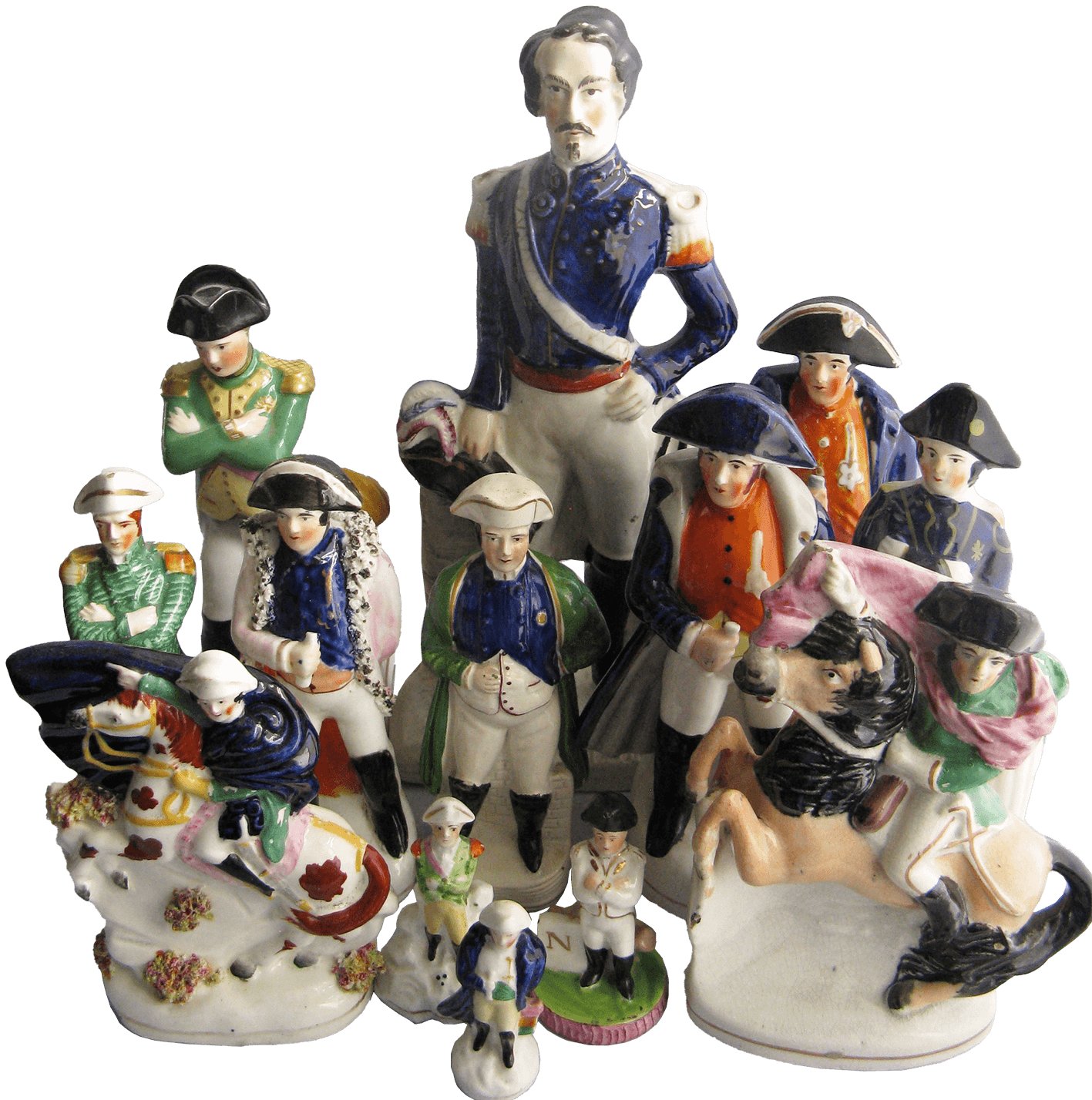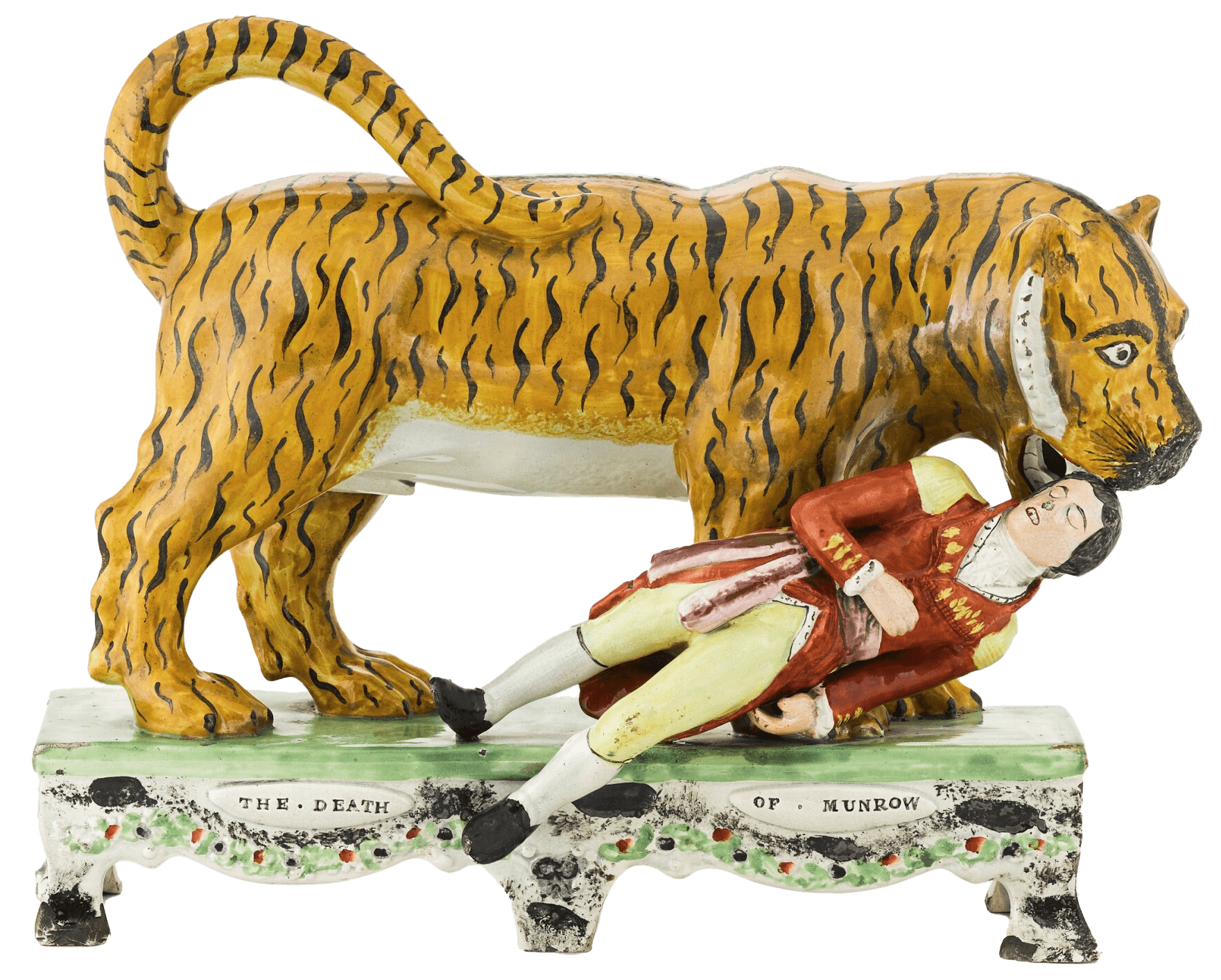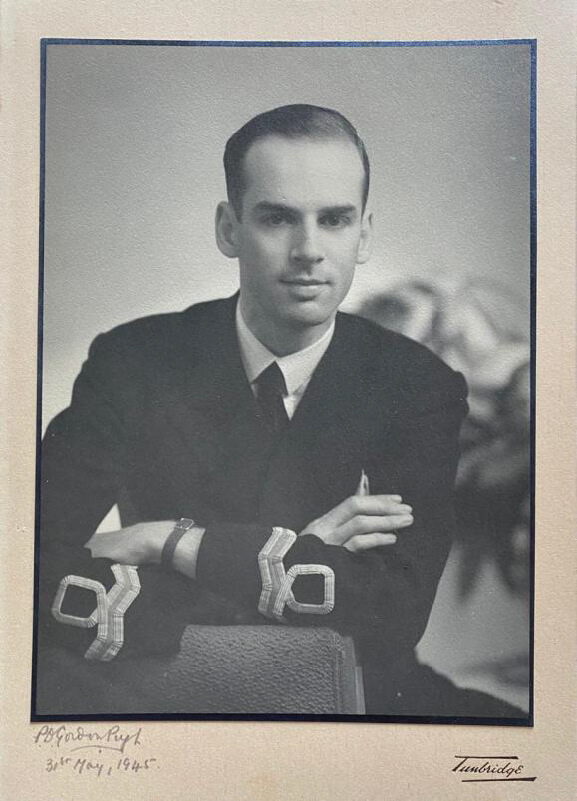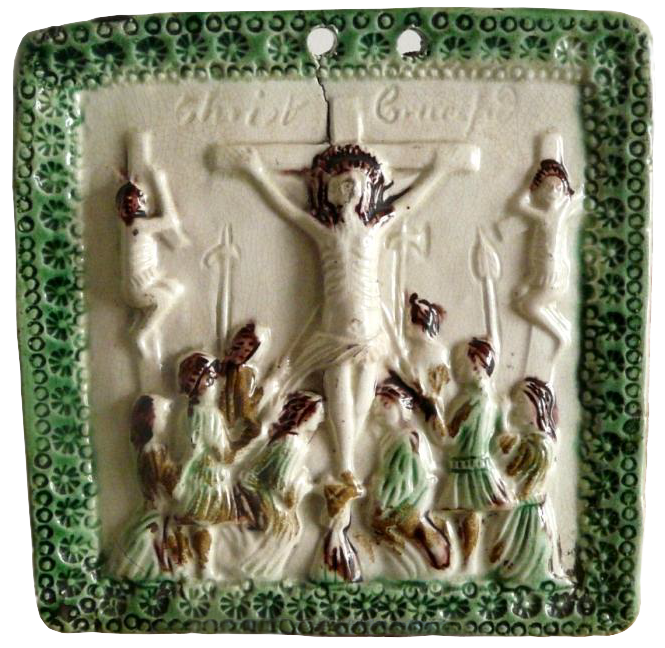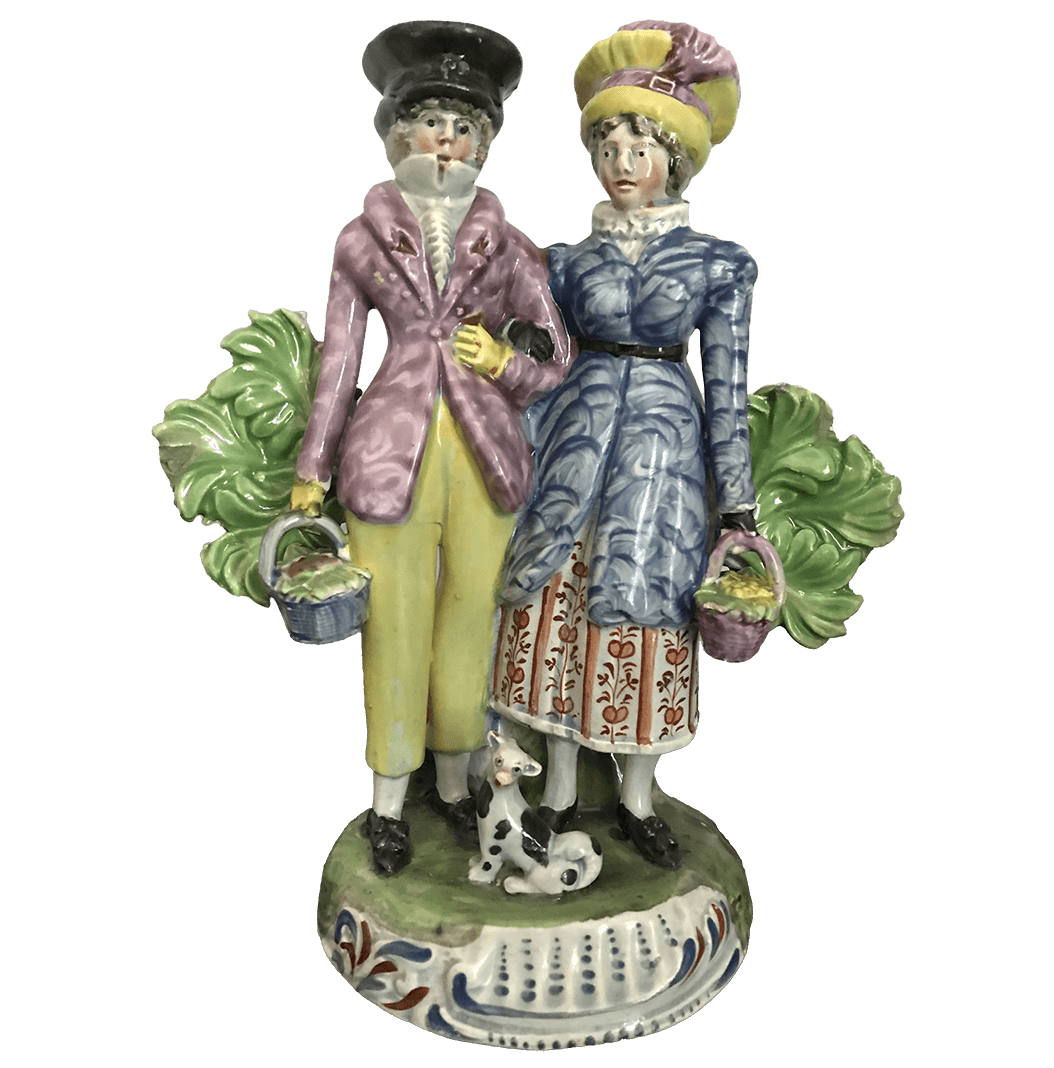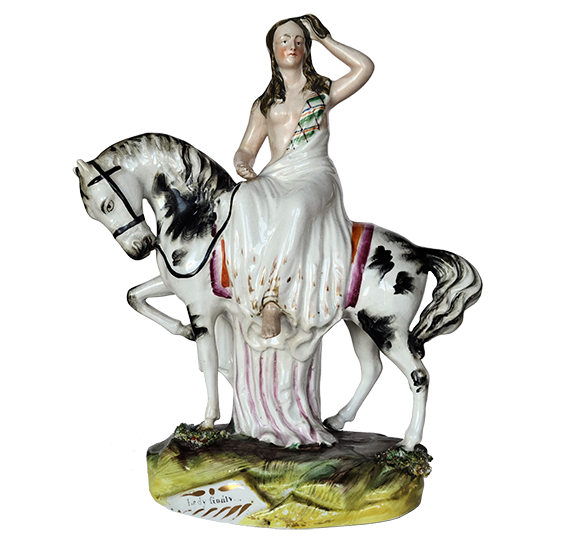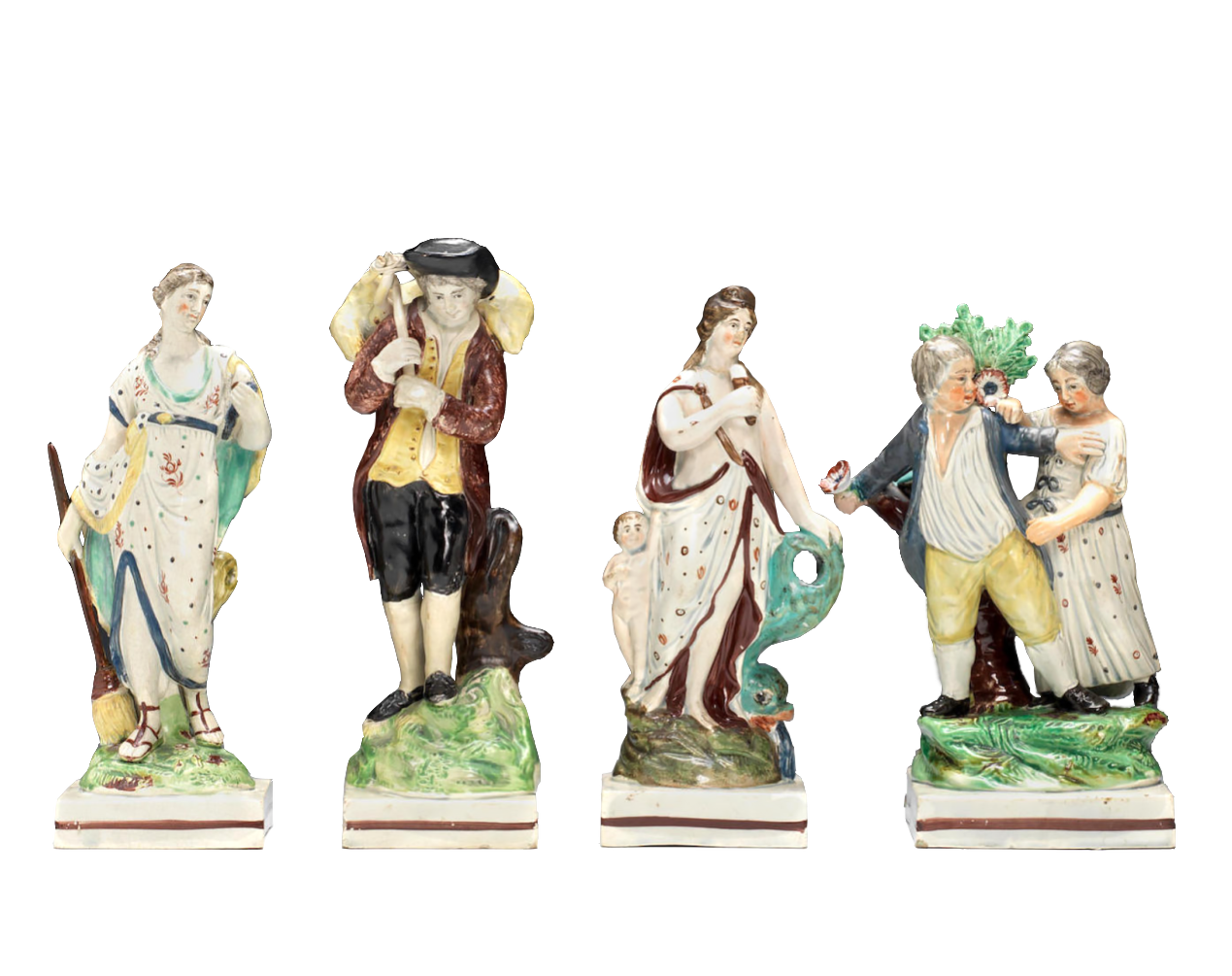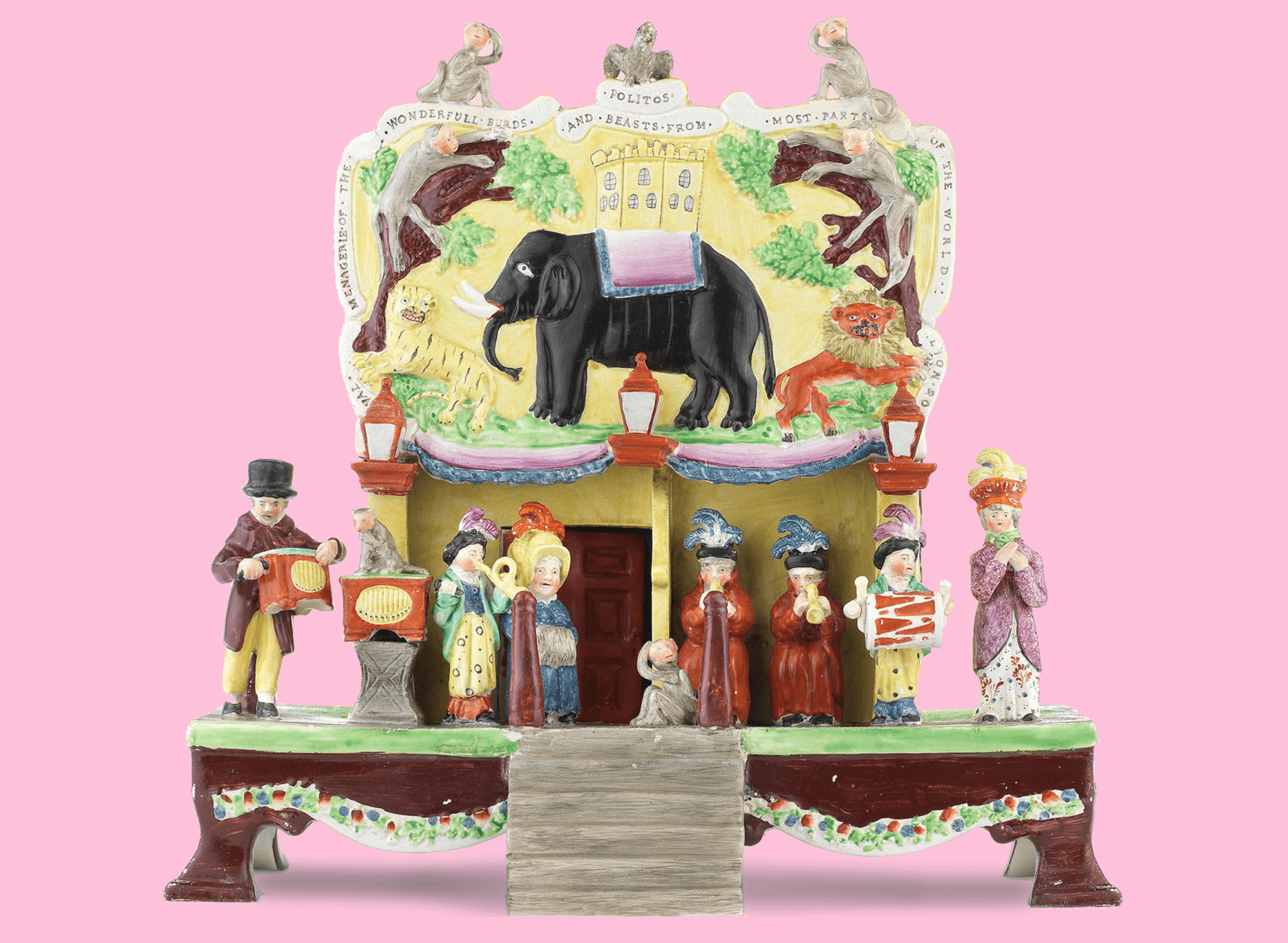The auction house’s catalogue confidently declared the next item in the sale to be: ‘Staffordshire pottery figure – Emperor Napoleon I’. The auctioneer raised his gavel, “Going, going, gone! £60 to the gentleman on my right.”
Triumphantly, the great man, Napoleon Bonaparte, was carried home. This event marked my very first purchase of a Staffordshire historical (or any other) figure. To put the record straight, the successful bid wasn’t made because of the Staffordshire heritage of the figure carefully carried from the saleroom. The purchase was made because at the bottom of the figure was an inscription, picked out in gold lettering – Em. Napoleon.
Why Napoleon? The reason is that, as a historian, I have been an admirer of Napoleon Bonaparte for many years. He was, first of all, a brilliant soldier. Rising from humble beginnings on the island of Corsica, he rapidly rose through the ranks of the French Revolutionary Army to command armies, demonstrating his brilliance in manoeuvring his men and striking at an enemy’s weakest point to win one battlefield victory after another – at Marengo, Ulm, Austerlitz, Jena, Friedland, Wagram – a victory roll that made him master of western Europe and the hero of the French people. That is, until he unwisely invaded Russia in 1812 and then faced his nemesis when he hurried north from Paris to fight a coalition of Allied armies, ending in defeat at Waterloo in 1815 and his abdication. His opponent on the fateful day at Waterloo was the Duke of Wellington, who also became a favoured figure in the Staffordshire pottery gallery.
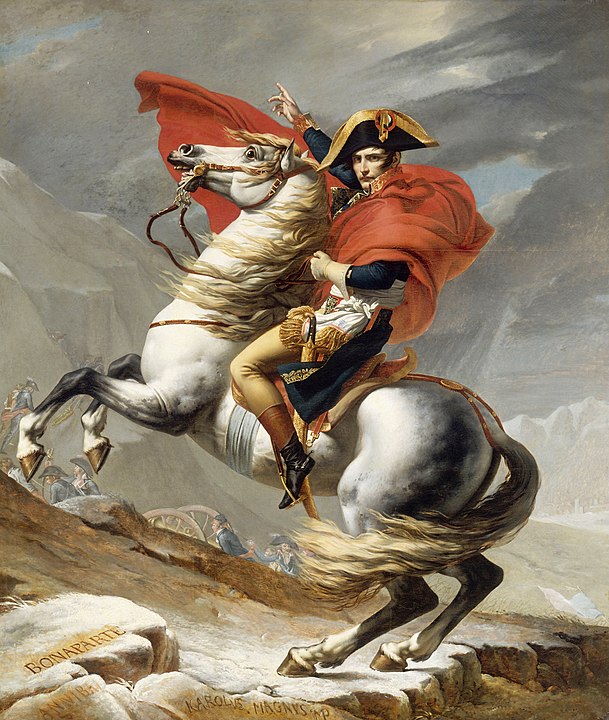
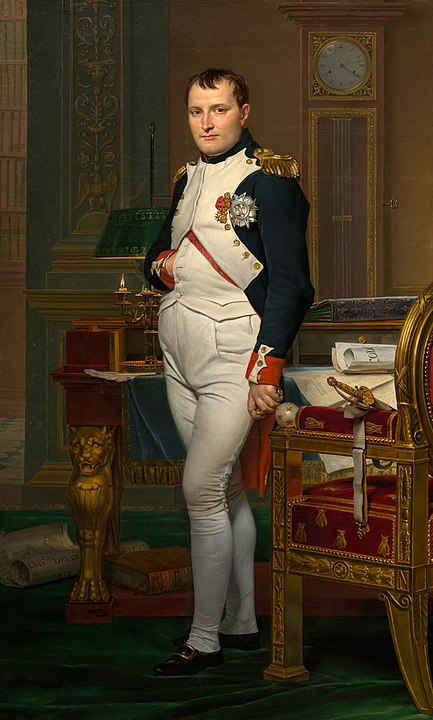
But Napoleon Bonaparte wasn’t only a brilliant battlefield commander. Squashed between his campaigns, he had time to carry out a transformation of French law, government and education. French law was consolidated in the Code of Napoleon which has lasted as the basis of French civil law to this day. He reformed the education system, creating specialist schools (lycées) to produce soldiers, administrators and technicians. He also transformed the banking system and local government. He filled the Louvre with treasures (well, yes, they were seized from his defeated enemies).
The statuette of ‘Em. Napoleon’ in his smart uniform including gold epaulettes, feathers in his tricorne hat and gleaming black boots, has a barrel of gunpowder stuck under one arm and another at his feet, plus cannonballs – just in case his gunners ran short. He is now prominently placed on a window shelf in my conservatory. The Emperor’s gaze is quizzical, his goatee beard glistening, was he anticipating defeat in the Russian campaign or meeting his Waterloo? Or was he contemplating an interesting evening to be spent with Josephine? Who knows? Whatever the cause of Napoleon’s enigmatic expression, it creates a major topic for discussion when visitors come to view my very modest but growing Staffordshire collection.
Oops! Here comes a ‘however’ or even a howler, nearly a disaster. Having written enthusiastically about Em. Napoleon’s achievements, Staffordshire Figure Association experts dealt a bit of a blow by telling me that the figure actually is not the soldier, conqueror, lawmaker, grumpy St. Helena exile. What’s the right word – misappropriation, mistaken identity, clanger? I was informed that he is Emperor Napoleon III (the Third, no less). For proof, I was directed to the massive catalogue of Gordon Pugh who usually has the answer. And, right enough, there he is in Section C, plate 38, figure 96. A different Napoleon entirely. My Em (now the III’d) was the son of Louis Bonaparte, the nine years younger brother of Napoleon Bonaparte. Louis owed his promotion to be King of Holland because of his brother’s enthusiasm for pushing members of his own family on to vacant European thrones. However, as we know, both Bonaparte brothers came a cropper after Waterloo. After 1815, Louis Napoleon’s son, also called Louis, spent years in exile in England during the reigns of the last of the Bourbons and their successors. However, a revolution in Paris in 1848 gave my enterprising Louis Napoleon an opportunity to cross the Channel and to seize power in 1851, taking the title of Emperor a year later.

Thus he became Emperor Napoleon in his own right, and my figure was correctly labelled by the potters as Em. Napoleon but might have been more clearly marked as Em.III. He married well, as they used to say, to Eugenie, a Spanish countess and he visited Queen Victoria in his grandest years of power. During the Crimean War, he supported Britain by sending French troops out to Russia. The 1870 war with Prussia and the defeat of the French army at Sedan brought him down and Em. Napoleon III ended his days back in England in a second and sad exile in the damp solitude of a dowdy villa in Chislehurst, Kent (not quite as elegant nor with the grandeur of the Elysee Palace in Paris), in 1873.
That’s two Napoleons accounted for. And each created in multiple Staffordshire figures. But what of Napoleon II? He has slipped from memory and he evaded the Stoke moulders. For the record of history, Napoleon II was Number One’s son, born in 1811. He was nominated, aged only three, to be Napoleon’s successor but his reign was on the short side at only two days. After 1815 he retreated to Vienna with his mother, the Empress Marie Louise, and died there with tuberculosis at the age of 21.
There are then only two Napoleons listed and illustrated in Gordon Pugh’s catalogue. Two out of three. But Louis comes off worse, totally ignored. There were eighteen Kings of France called Louis. And not one of them was picked out by Staffordshire potters. No fame, no figure. Louis XVI might have been a possibility for a tragic figure, his head lopped off on the guillotine. But no, not one out of eighteen King Louis (es) appealed to Staffordshire potters.
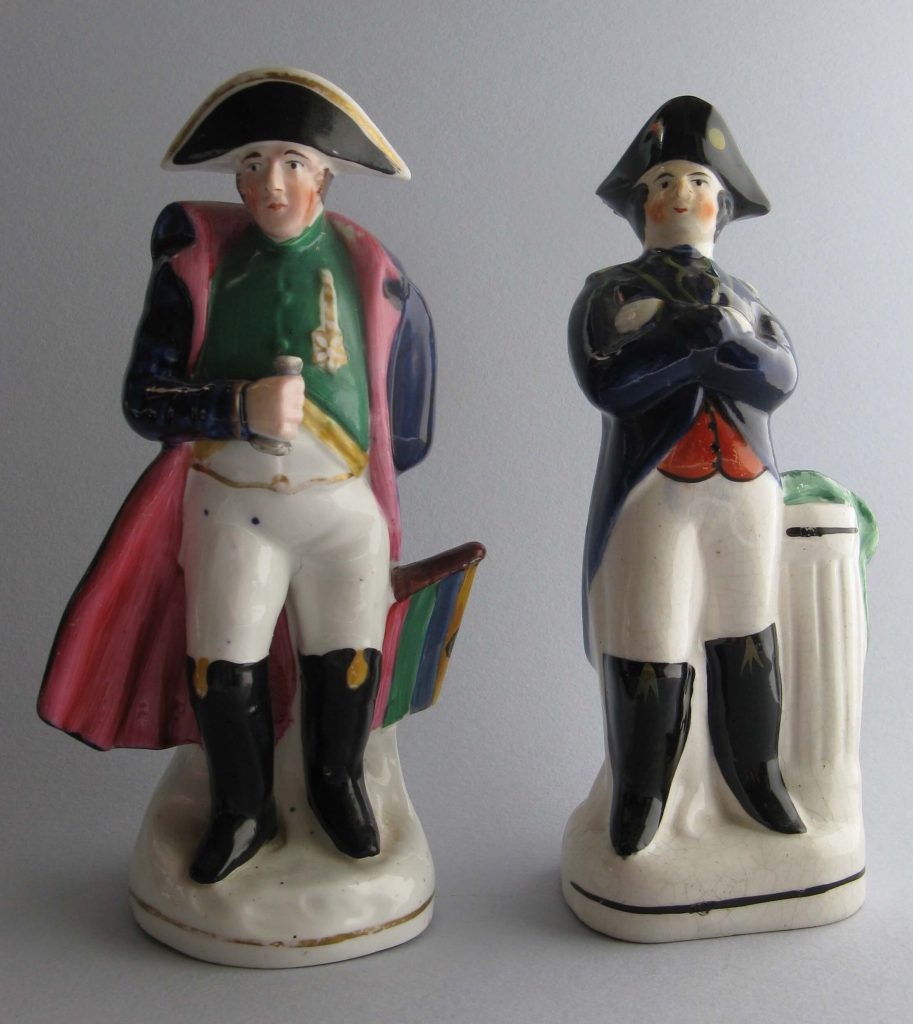
Ref. Harding Book One:
(left) p.24, fig.25 P; (right) p.25, fig.29 P
From the collection of Dorothea and Kelvin Gillett
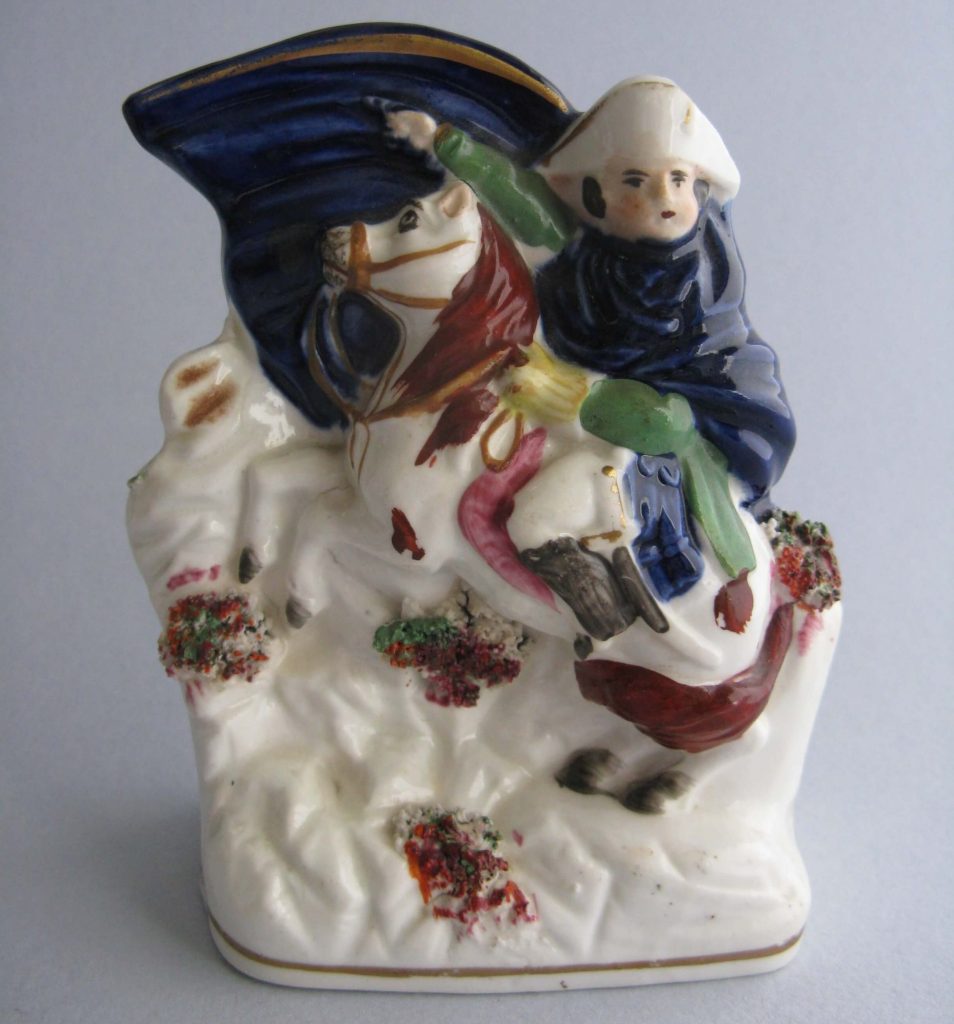
Ref. Harding Book One:
p.23, fig.20, half of a mirror image pair
From the collection of Dorothea and Kelvin Gillett
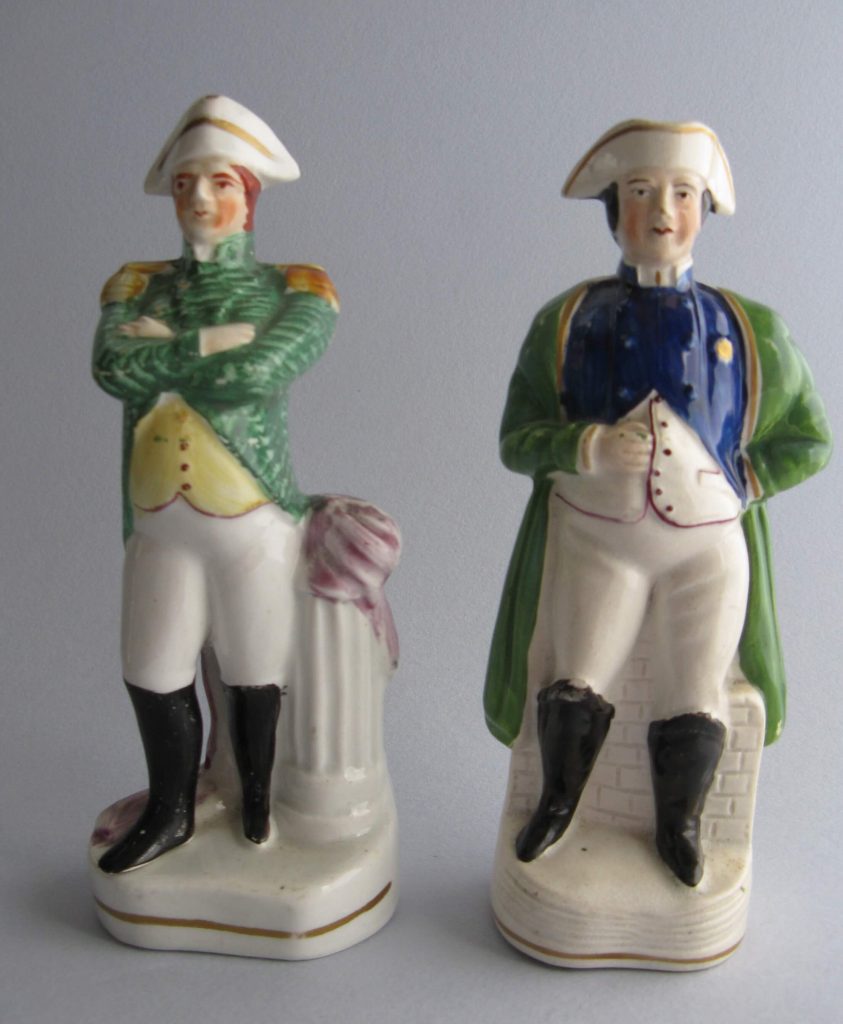
(left) p.25, similar to fig.29 P; (right) p27, fig.33 P
From the collection of Dorothea and Kelvin Gillett
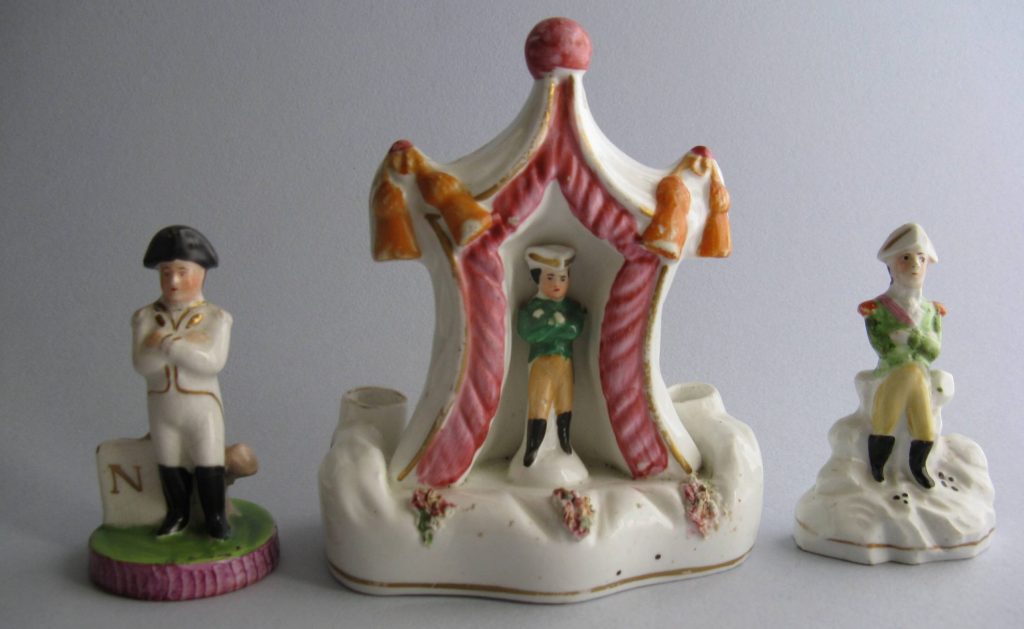
(left) unrecorded small standing figure titled “N”; (centre) p.24, fig.22; (right) unrecorded small standing figure
From the collection of Dorothea and Kelvin Gillett
I seem to share the addiction that affects other Staffordshire pottery enthusiasts. We have the same obsessions that afflict other collectors – book lovers, stamp fans, militaria obsessives and their like. Napoleon (III, not I) was my first, my number one. He, with the others, stands proud on the shelves. And when visitors come, their eyes widen and the questions tumble out as they sip a glass of merlot or burgundy; Napoleon would have approved. And, as we all know, an obsession needs to be fed. It is never satisfied. And so other distinguished figures from the past, including Napoleon I, will no doubt be added to my collection. The quest continues.
Returning to Napoleon III, what of the auction house’s error of attribution? Someone on their staff didn’t carry out their homework efficiently. And not their first and only mistake, one might think. Four out of ten and a detention for that staff member perhaps. However, with over 300 items or lots in each weekly sale at this auction house, errors are bound to occur. Even Sotheby’s is known to have made mistakes. It does show that auction rooms cannot be fully trusted – not an original judgement for me to make and among SFA members there could be other victims.
Napoleon was the first but certainly not the last in my Staffordshire historical figure hoard. Collectors find it difficult to control the bug. Alongside Em. Napoleon sits a small but growing army. Some are revered in Scotland – Robbie Burns holding a book of his poems, William Wallace, clad in tartan with knee-length garters and a large tam-o-shanter on his head. Much favoured by Victorians, other worthies stand tall – Queen Victoria, General Havelock, Shakespeare and Garibaldi, together with other famous but dodgier characters – the highwaymen Dick Turpin and Tom King, and another but more heroic robber, Robin Hood. One figure is missing – Napoleon Bonaparte. I am now on the lookout for my own Napoleon – he tends to be elusive.
Alan Jamieson is a Staffordshire Figure Association member enjoying an idle retirement just north of London. His career was in senior executive positions in education and publishing. He has a modest Staffordshire historical figures collection.


